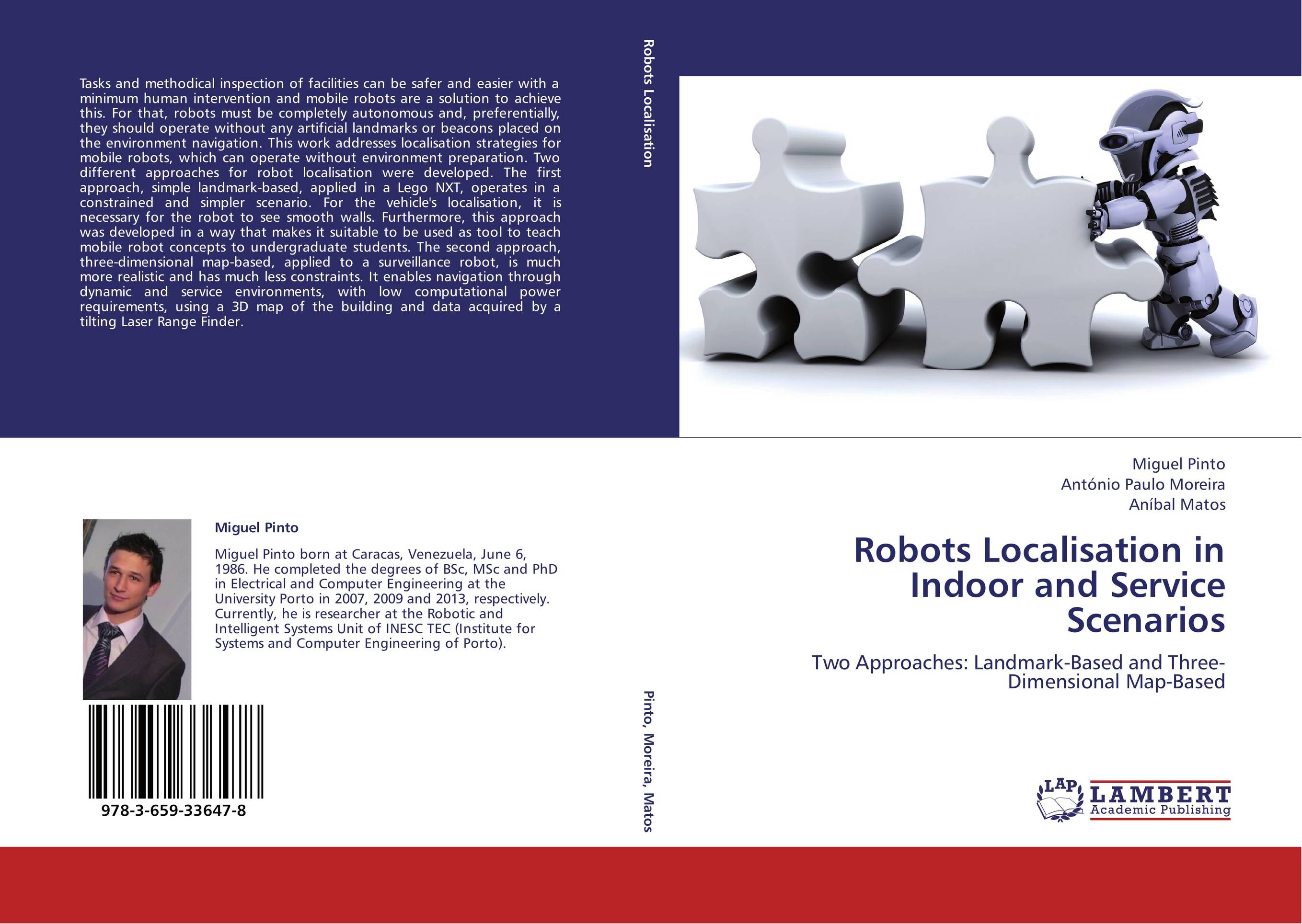| Поиск по каталогу |
|
(строгое соответствие)
|
- Профессиональная
- Научно-популярная
- Художественная
- Публицистика
- Детская
- Искусство
- Хобби, семья, дом
- Спорт
- Путеводители
- Блокноты, тетради, открытки
Robots Localisation in Indoor and Service Scenarios. Two Approaches: Landmark-Based and Three-Dimensional Map-Based

В наличии
| Местонахождение: Алматы | Состояние экземпляра: новый |

Бумажная
версия
версия
Автор: Miguel Pinto,Ant?nio Paulo Moreira and An?bal Matos
ISBN: 9783659336478
Год издания: 2013
Формат книги: 60×90/16 (145×215 мм)
Количество страниц: 232
Издательство: LAP LAMBERT Academic Publishing
Цена: 51752 тг
Положить в корзину
| Способы доставки в город Алматы * комплектация (срок до отгрузки) не более 2 рабочих дней |
| Самовывоз из города Алматы (пункты самовывоза партнёра CDEK) |
| Курьерская доставка CDEK из города Москва |
| Доставка Почтой России из города Москва |
Аннотация: Tasks and methodical inspection of facilities can be safer and easier with a minimum human intervention and mobile robots are a solution to achieve this. For that, robots must be completely autonomous and, preferentially, they should operate without any artificial landmarks or beacons placed on the environment navigation. This work addresses localisation strategies for mobile robots, which can operate without environment preparation. Two different approaches for robot localisation were developed. The first approach, simple landmark-based, applied in a Lego NXT, operates in a constrained and simpler scenario. For the vehicle's localisation, it is necessary for the robot to see smooth walls. Furthermore, this approach was developed in a way that makes it suitable to be used as tool to teach mobile robot concepts to undergraduate students. The second approach, three-dimensional map-based, applied to a surveillance robot, is much more realistic and has much less constraints. It enables navigation through dynamic and service environments, with low computational power requirements, using a 3D map of the building and data acquired by a tilting Laser Range Finder.
Ключевые слова: 3D mapping, Robot localisation, 3D matching, Simultaneous Localisation and Mapping, Tilting Laser Range Finder, Surveillance Robot, LEGO NXT, Occupancy Grids, Multi Sensor Fusion, Service Robots



